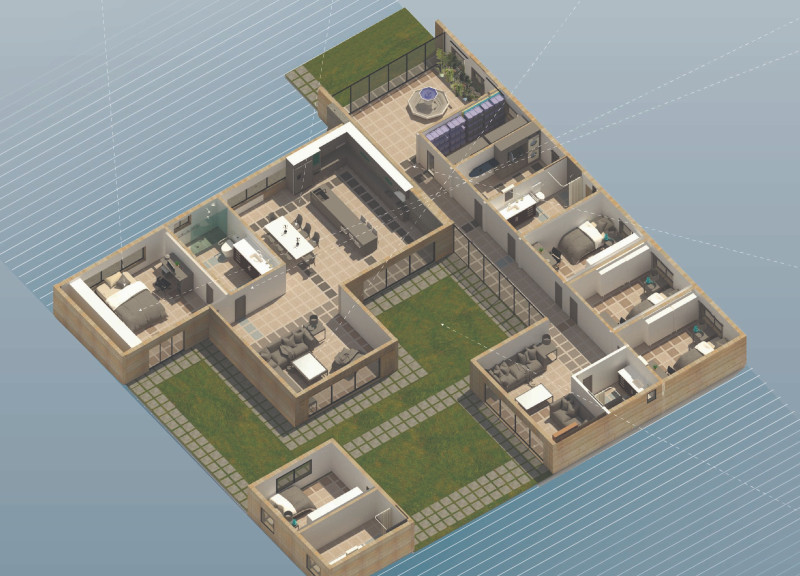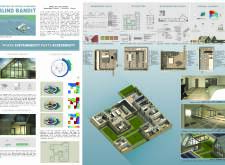5 key facts about this project
Community Engagement Through Intentional Design
The "Blind Bandit" project represents a commitment to inclusivity, focusing on user-centered design principles. The layout is intentionally organized to promote interaction among residents, while also allowing for personal privacy. Key areas include communal gathering spaces, private living quarters, and functional areas such as kitchens and bathrooms, all designed for ease of navigation. Unique to this project are the tactile pathways created from strategically textured tiles, which assist visually impaired residents in orienting themselves within the space.
Another notable feature is the integration of natural elements, such as a central courtyard with a water fountain, which serves both aesthetic and auditory purposes. This element contributes to the overall sensory experience and creates a calming ambiance. The architectural response to the local climate incorporates elements such as large windows for natural light and strategic overhangs to mitigate solar heat gain, ensuring a comfortable interior environment throughout the year.
Integration of Tactile and Acoustic Design Elements
The design utilizes innovative approaches that set it apart from conventional residential architecture. The building's massing incorporates soft curves juxtaposed with angular shapes, fostering visual and tactile contrasts that enhance spatial awareness for visually impaired individuals. The architectural design employs rammed earth as a primary building material, which provides thermal stability and embodies the concept of sustainability.
Sound design is another critical component of the project. The architecture is structured to maximize sound reverberation, aiding in spatial orientation through auditory cues. This unique approach allows residents to navigate more confidently, as familiar sounds can guide them through shared and private spaces.
Overall, the "Blind Bandit" project serves as a model of how architecture can adapt to specific user needs, particularly in the context of accessibility and sensory engagement. The integration of sustainable materials and innovative design solutions highlights the potential for architecture to respond effectively to social and environmental challenges.
For further insights into the architectural plans, architectural sections, and architectural designs, readers are encouraged to explore the project presentation for an in-depth understanding of its comprehensive design strategies and visionary approach to inclusive living environments.























